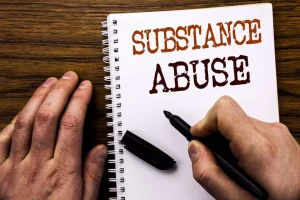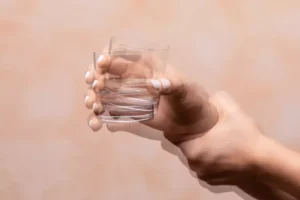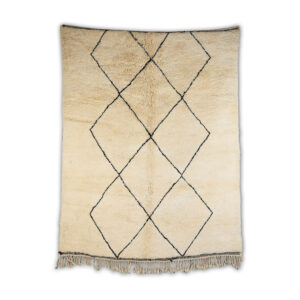
At Zinnia Health, we believe every individual deserves personalized, judgment-free support. That’s why we prioritize mental health through a variety of counseling and therapeutic services. Alternatively, there may be alcohol support services in your local area that you can access without a medical referral. The Department of Health recommends a limit of 14 units per week1. However, according to the NHS, 21% of adults in England regularly drink over this amount each week.
Medical tools and resources
If you experience facial flushing while drinking, you should try to limit or avoid alcohol. The only way to prevent facial flushing from drinking is to avoid or limit your alcohol consumption. This might be a good idea, even if you don’t have a problem with turning red. Alcohol can also increase your metabolic rate, causing your body to produce more heat.
Why does alcohol make you hot?

However, a 2024 randomized clinical trial of 598 women with recurring UTIs found no benefit of using D-mannose for preventing UTIs. As of now, there are no specific guidelines for taking D-mannose for UTIs. Some studies have shown that in healthy individuals who don’t experience chronic or recurring UTIs, about 25% of those mild infections may clear without antibiotics. Li said she generally tells people not to drink more than two or three times per week.
MORE IN LIFE
- To keep health risks from alcohol at a low level, it’s important to follow the guidelines.
- The real health risks come after prolonged and continued exposure to acetaldehyde and excessive alcohol consumption.
- While alcohol has been linked to greater risk-taking in males and females, it appears to be more of a driving factor for males.
- Alcohol-related liver disease also does not usually cause symptoms until the liver is severely damaged.
Adding a hot liquid to your body does increase your body temperature, but the warming effect on your body is minimal. Imagine adding eight ounces of warm water to 15 gallons of warm water—the temperature won’t really change that much. When I’m cold, it seems like all I can think about is holding that steaming cup, and as soon as I start sipping I feel an instant shot of heat to my chilly bones. The medicine works by reducing the size of very small blood vessels. Stopping alcohol abruptly after long-term heavy drinking can also lead to alcohol withdrawal syndrome, which commonly manifests as symptoms like nausea and vomiting. But if heavy sweating is accompanied by fever, rapid heartbeat, confusion, or even hallucinations, one should seek medical assistance.
- The only way to prevent facial flushing from drinking is to avoid or limit your alcohol consumption.
- Whiskey may provide temporary relief from specific cold symptoms, but it’s generally not advisable to consume alcohol when sick.
- Alcohol causes blood vessels in the skin to dilate, increasing blood flow and contributing to the sensation of warmth.
- Other people drink alcohol at levels that are likely to lead to physical or mental health problems.
- Based on various studies, males are more likely to engage in risky sexual behavior, such as intercourse without barrier protection, when under the influence.
Since we’re already dehydrated from alcohol, this is like a double whammy, causing us to experience even greater thirst, weakness, dry mouth, dizziness, or lightheadedness. Rough sleeping in extremely low temperatures over winter, combined with prevalent alcohol addiction problems, make the homeless population particularly vulnerable to hypothermia. If you struggle with binge drinking or alcohol why does drinking make you hot abuse and want to quit, you aren’t alone. We offer various substance abuse services that can help you or a loved one overcome this addiction and regain sobriety. No matter how long you’ve struggled with drug or alcohol abuse, we’re here to help. We use a pharmacist-formulated blend of Glutathione, Dihydromyricetin, Cysteine, L-Theanine, & B Vitamins to stop alcohol flushing before it can begin.


Make sure it’s obvious, enthusiastic, and clear before and during any sexual activity. This is especially important when there’s alcohol involved, since drinking can make things fuzzy and impair a person’s judgment. Keep in mind that cutting back on alcohol isn’t good just for preventing excessive heat or sweating, but also for enhancing our overall mental and physical health as well. But, when you’ve been drinking, your liver is madly metabolising all the alcohol, breaking it down to get it out of your blood stream.
Managing Alcohol-Induced Heat
This results in increased blood flow to the skin, which can also give a sensation of warmth. Excessive drinking combined with the cold can lead to hypothermia, which occurs when your body temperature drops so low that it causes a cardiac arrest. A study7 of hypothermia and alcohol poisoning in adolescents found that in winter 26.6% of the intoxicated subjects experienced mild hypothermia. According to the National Institute on Alcohol Abuse and Alcoholism4, it’s thought that with reduced quantities of this enzyme, certain by-products build up in the body which cause the flushing. The marked vasodilation in people with this genetic trait increases the volume in the blood vessels and reduces blood pressure – making them prone to low blood pressure5 and dizziness. You may begin to feel hot when drinking alcohol because of your liver.
While at-home treatments may help with mild cases, you should call your healthcare provider if your symptoms persist or worsen. In some people, the initial reaction may feel like an increase in energy. But as you continue to drink, you become drowsy and have less control over your actions. If you or someone you know drinks alcohol, it is important to bring intention to the quantity that you consume, with knowledge of what is considered heavy or risky alcohol use. But there are many things we do know about alcohol use that can, along with personal observation, provide a useful roadmap for navigating drinking and vasomotor symptoms. Besides, happy campers with hot drinks are nicer than grumpy folks with ice chunks in their water bottle.
Physical Signs You’re Drinking Too Much

A few drinks may cause your heart to accelerate, which further increases the chances of flushing and sweating. Dr Jain says, “Alcohol impacts the central nervous system, the circulatory system, and every part of your body. Thus, drinking leads to an increased heart rate and widens blood vessels in your skin.” This tends to trigger perspiration.
- As a result, you may find yourself having frequent sore throat pains, catching colds and infections more often.
- “High emotion can trigger hot flashes and night sweats,” Dr. Marin says.
Metabolism and Heat Production
In reality, drinking alcohol can cause a decrease in your internal body temperature. If someone drinks to the point of alcohol poisoning, their body temperature could drop significantly, potentially leading to hypothermia. As people who flush red when they drink know, alcohol increases blood flow to the skin (vasodilation). « This increases skin temperature and makes you feel warm,” says Professor of human and applied physiology Michael Tipton. Hangover symptoms like excessive sweating, dehydration, and hot flashes can last up to 24 hours after your last drink. The longevity and severity of hangover symptoms depend on how much alcohol was consumed, how dehydrated you are, your age, and other conditions.








